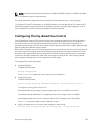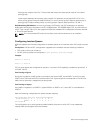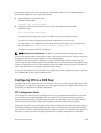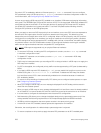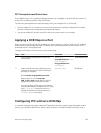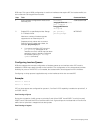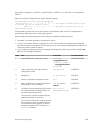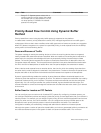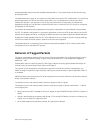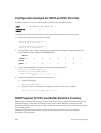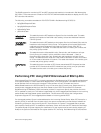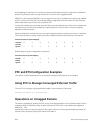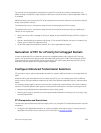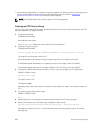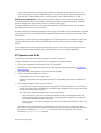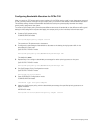guaranteed buffer reduces the total available shared buffer to . This shared buffer can be used for lossy
and lossless traffic.
The default behavior causes up to a maximum of 6.6 MB to be used for PFC-related traffic. The remaining
approximate space of 1 MB can be used by lossy traffic. You can allocate all the remaining 1 MB to
lossless PFC queues. If you allocate in such a way, the performance of lossy traffic is reduced and
degraded. Although you can allocate a maximum buffer size, it is used only if a PFC priority is configured
and applied on the interface.
The number of lossless queues supported on the system is dependent on the availability of total buffers
for PFC. The default configuration in the system guarantees a minimum of 52 KB per queue if all the 128
queues are congested. However, modifying the buffer allocation per queue impacts this default behavior.
By default the total available buffer for PFC is 6.6 MB and when you configure dynamic ingress buffering,
a minimum of least 52 KB per queue is used when all ports are congested.
This default behavior is impacted if you modify the total buffer available for PFC or assign static buffer
configurations to the individual PFC queues.
Behavior of Tagged Packets
The below is example for enabling PFC for priority 2 for tagged packets. Priority (Packet Dot1p) 2 will be
mapped to PG6 on PRIO2PG setting. All other Priorities for which PFC is not enabled are mapped to
default PG – PG7.
Classification rules on ingress (Ingress FP CAM region) matches incoming packet-dot1p and assigns an
internal priority (to select queue as per Table 1 and Table 2).
The internal Priority assigned for the packet by Ingress FP is used by the memory management unit
(MMU) to assign the packet to right queue by indexing the internal-priority to queue map table (TABLE 1)
in hardware.
PRIO2COS setting for honoring the PFC protocol packets from the Peer switches is as per above Packet-
Dot1p->queue table (Table 2).
The packets come in with packet-dot1p 2 alone are assign to PG6 on ingress.
The packets come in with packet-dot1p 2 alone use Q1 (as per dot1p to Queue classification – Table 2)
on the egress port.
• When Peer sends a PFC message for Priority 2, based on above PRIO2COS table (TABLE 2), Queue 1 is
halted.
• Queue 1 starts buffering the packets with Dot1p 2. This causes PG6 buffer counter to increase on the
ingress, since P-dot1p 2 is mapped to PG6.
• As the PG6 watermark threshold is reached, PFC generats for dot1p 2.
Data Center Bridging (DCB)
261



